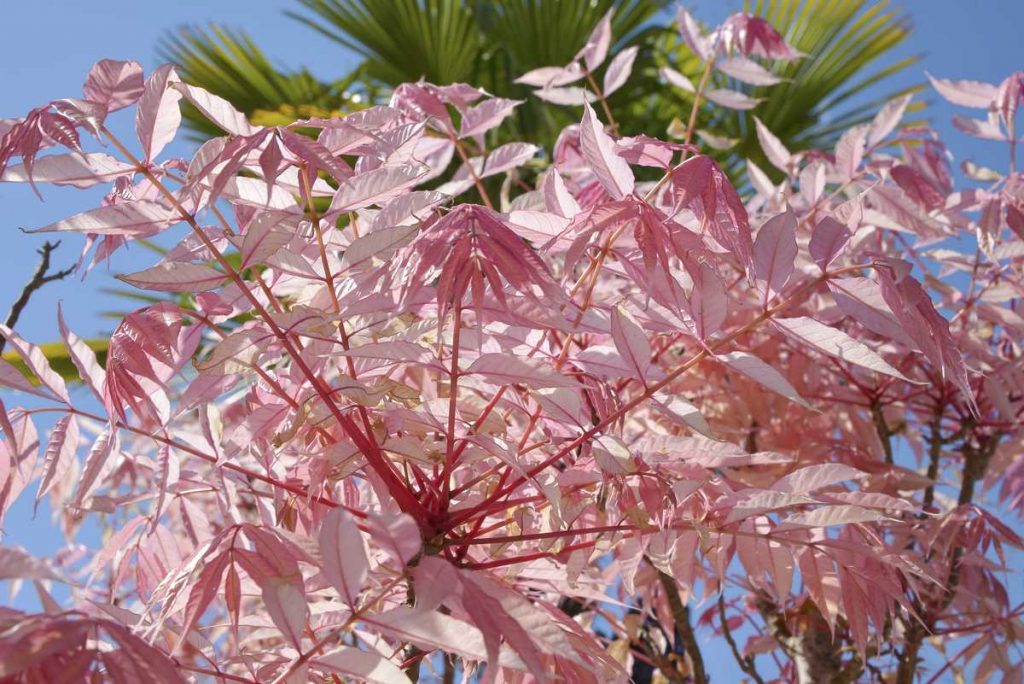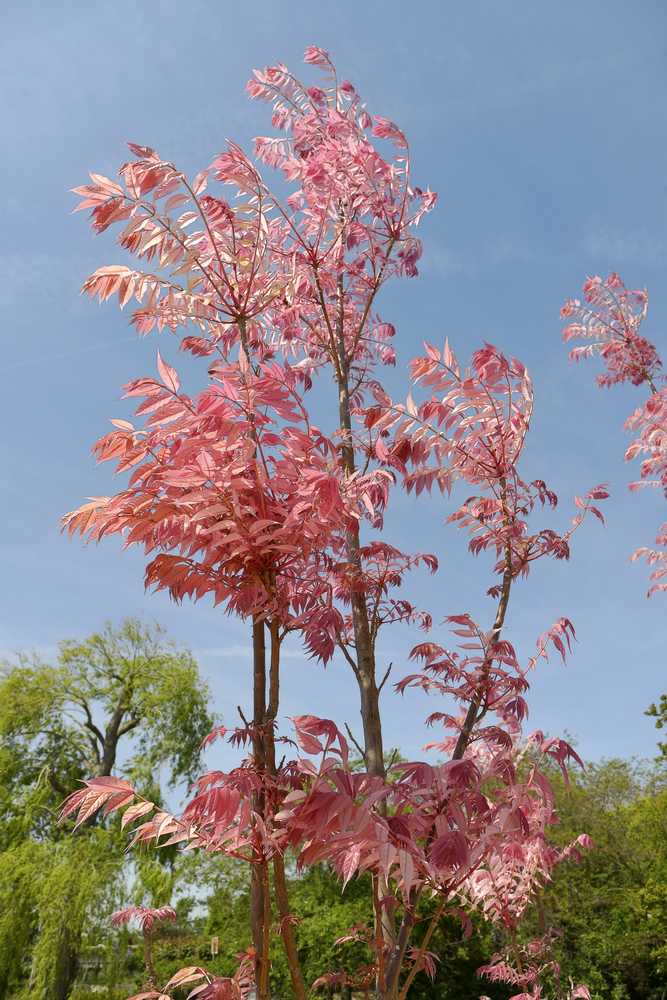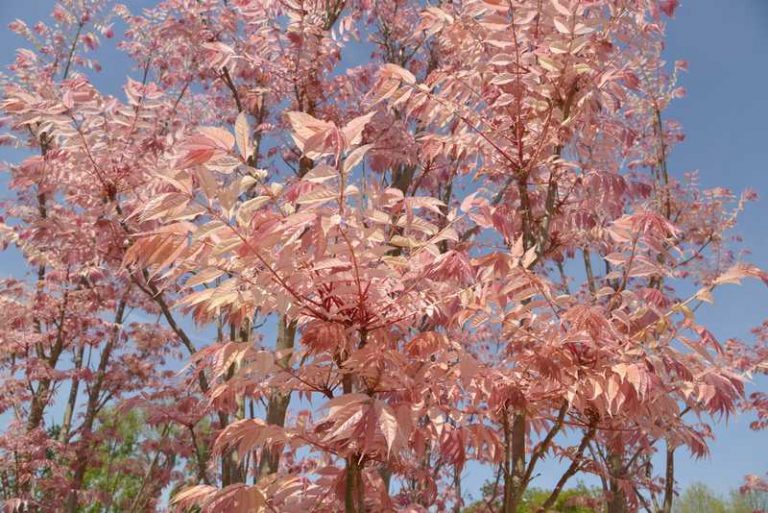
Appreciated for its beautiful colors of pink leaves in spring, brilliant green in summer and golden yellow in autumn, the Chinese cedar or Chinese mahogany is a beautiful ornamental tree to plant alone or in alignment.
Name: Chinese mahogany, Chinese cedar, neem
Botanical name: Cedrela sinensis , T oona sinensis
Origin: China
Family: Meliaceae
Height and spreading: Tree of rapid growth, especially at the beginning, the cedrele of China takes one for columnar and thus pushes more in height (approximately 10 m) than in width (2 to 5 m). Its rounded crown widens, its thick, sparsely branched branches are quite spaced.
Bark: Brown, rough and aromatic, the bark exfoliates in long strips with age.
Foliage: Deciduous. Its 40 to 60 cm long leaves are made up of 10 to 13 pairs of oval leaflets that are dark green on the top, slightly gray on the bottom.
Flowering: Chinese cedarproduces in May or June, at the end of the branches, pendent panicles of small fragrant whitish flowers. They then give way in autumn to fruits in woody capsules containing numerous winged seeds.
Exposure: In the sun, sheltered from the cold wind.
Soil: This tree grows best in cool, deep, rich, well-drained soil. But it is also content with poorer, calcareous and even not very dry land.
Hardy: Down to minus 15°.
Planting Chinese cedar
Plant this beautiful ornamental tree in spring or fall.
- Dig a hole 50 cm deep and wide.
- Mix the extracted soil with the same amount of mature compost.
- If your soil is heavy and it retains water, add 2 shovels of sand.
- Insert a solid stake and install the Chinese mahogany in the center of the hole.
- Cover the sides with the soil mixture. Tie the trunk to the stake without strangling it.
- Finish with a generous watering.

Maintenance of the Chinese cedar
Easy to grow, the Chinese cedar requires little maintenance.
Watering the Cedrela
The year of planting, water your tree very regularly from spring to autumn. Once established, the Chinese cedar is very resistant to drought. So be satisfied with a few supplies of water in summer in hot and scorching weather.
Size of the Chinese cedar
Chinese mahogany naturally assumes an erect and narrow habit. Generally, it is therefore not necessary to prune this ornamental tree. However, if you want to prune it to maintain a nice compact habit, prune it outside of its growth period.
Diseases and Parasites
This tree with hard and resistant wood is not very sensitive to diseases or insect attacks.
Where to plant Chinese cedar?
Although perfectly hardy since it withstands temperatures down to minus 15°C, this ornamental tree is ideal in regions with mild winters, particularly in the Mediterranean area and along the Atlantic coast.
It is superb planted in isolation on a lawn . This makes it easier to eliminate the many suckers that form nearby, because Toona sinensis can sometimes be considered an invasive species.
Other uses of the Chinese cedar are also frequent: it can be planted in alignment along an alley to highlight its columnar habit or in front of trees with dark foliage , in order to highlight its beautiful spring and fall colors.
Chinese mahogany is edible
The young shoots of the Chinese cedar are edible in China, the country of origin of this weapon. These tender shoots are even very popular as vegetables, they taste like onions.
Chinese cedar and ailanth look alike
Beware of the risk of confusion! The Chinese cedar is very similar to the Glandulous ailanthus ( Ailanthus altissima ). Some distinctive signs to take into account:
- The leaves of the Cedrela give off a less unpleasant odor than that of the ailanthus
- The pith of the twigs of the Chinese cedar is golden yellow whereas it is brown in the ailanthus.
- Finally, the heartwood of Chinese cedar is reddish whereas it is yellowish in ailanthus. This neem wood (Cedrela) is also used in China to make many pieces of furniture. This color of wood and its use in cabinetmaking are at the origin of the name Mahogany from China.

How to sow and take cuttings of Chinese cedar?
The sowing of the small winged seeds of the Chinese cedar is possible in autumn or spring . Keep the young plants obtained all winter away from the cold.
But it is easier and faster to propagate Chinese mahogany by taking in the fall or spring one of the shoots that appear near the mother plant.
Chinese Flamingo Cedar
The Chinese Flamingo ( Toona sinensis flamingo ) is probably the most beautiful variety. Its decorative foliage changes color with the seasons: salmon pink in spring, it turns creamy yellow then brilliant green in summer, before taking on a beautiful golden yellow color in autumn .
